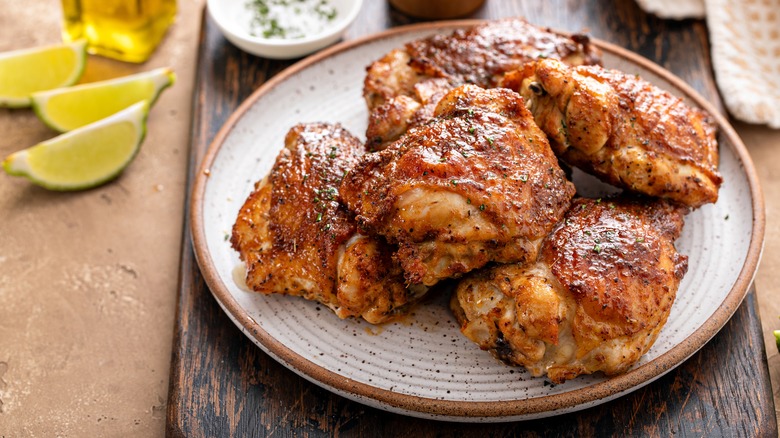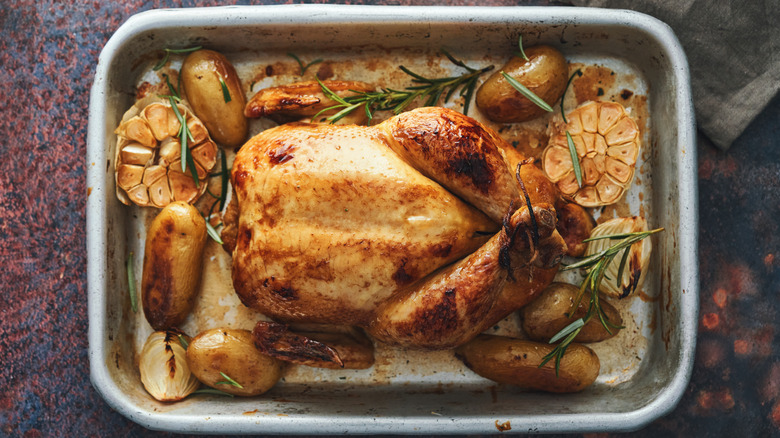Why You Should Avoid Overcrowding Chicken At All Costs
Unless you want to accidentally stew your chicken, you should never overcrowd your pan or pot. Overcrowding meat leads to less flavor and a significantly different texture thanks to an excess of moisture. But how can moisture, the thing that keeps meat juicy, possibly be a bad thing?
The surface temperature of meat needs to reach 300 degrees Fahrenheit to trigger what's known as the Maillard reaction, not to be confused with caramelization. This is a scientific term for the creation of melanoidin pigments, which is a fancy name for the molecules responsible for that lovely brown crust or crisp golden skin. It's that crust and crispy skin that gives meat its special roasted or seared flavor.
As chicken cooks, it releases juices, which lowers the surface temperature, preventing the Maillard reaction. If the meat isn't overcrowded, the liquid quickly evaporates without significantly affecting the surface temperature. However, when chicken is crowded, the released moisture can't escape, so it takes more time to evaporate.
This liquid build-up creates soggy skin and prevents the outside of the meat from browning, robbing your chicken of its roasted or pan-fried flavor — and no one wants that. Properly spacing your chicken is key to allowing juices to evaporate as needed. This principle applies to anything you cook in the oven, and using a wire rack can even save you from soggy oven-roasted veggies.
How to prevent common overcrowding mistakes
One of the most common overcrowding mistakes home cooks make is not browning chicken in batches. When a recipe says "brown the chicken," it means give the outside extra flavor without fully cooking the center. Properly sized batches ensure the pan remains hot enough to evaporate juices and create a flavorful outer crust on the meat, while also preventing overcooking when it's finished in a sauce or stew.
For recipes like this Indian slow-braised chicken dum pukht, browning in batches is especially important. To keep the pan dry, brown the chicken in small batches, ensuring there's plenty of space and heat to trigger the Maillard reaction. This allows the browned chicken to impart rich flavor to the sauce while staying tender.
Overcrowding a roasting pan results in uneven, or even nonexistent, crispy chicken skin. Cooks achieve crispy skin by evaporating moisture through consistent heat and proper airflow. Neither of these elements can happen if the chicken sits in its own juices.
For example, this recipe for herbes de Provence Cornish hens requires roasting the hens in a wide tray. If the tray is too small, the released juices have less surface area contact with the oven's heat. As moisture builds up, it touches the bottom of the hen, leaving a clear line where the skin isn't crispy. To prevent this, ensure your tray is wide enough to spaciously accommodate both hens, and let their juices disperse.


